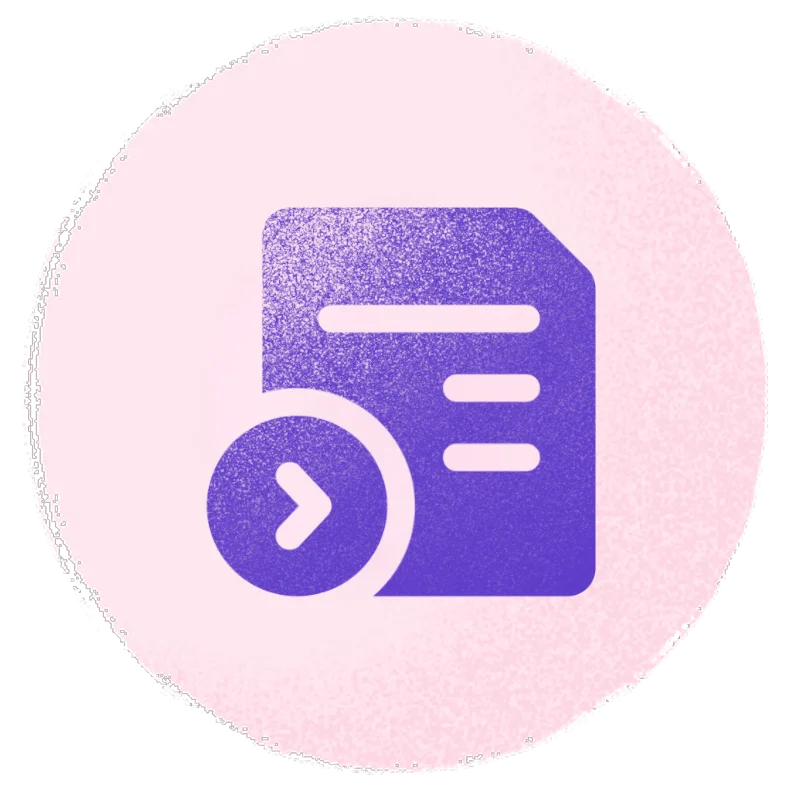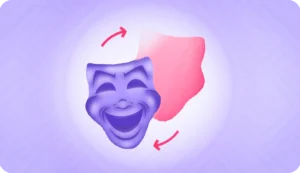Facial recognition technology is transforming security and user identification, yet it faces a critical challenge: ensuring accuracy while maintaining privacy.
According to MarketsandMarkets, the global facial recognition market is estimated to be worth $6.3 billion in 2023 and is projected to reach $13.4 billion by 2028, growing at a CAGR of 16.3%.
As the demand for real-time identification continues to grow, the complexity of face recognition algorithms must meet these heightened expectations without compromising ethical standards. To resolve these challenges, it’s essential to understand the fundamentals of facial recognition technology.
This article delves into what facial recognition is, how it works, and the key algorithms behind it. We also examine top solution providers and highlight the importance of evaluation datasets in measuring algorithm performance.
What is face recognition?
Face recognition is a technology that detects and recognizes the face of a person. Face recognition technology maps an individual’s face to match it with corresponding data in the database.
This technology, often, powered by AI and ML is a valuable tool for businesses, helping in face recognition and authentication. A facial recognition system uses deep learning, computer vision algorithms, and image processing to deliver accurate results.
Face recognition systems help businesses with ID verification during the sign-in or onboarding process. This system can also help prevent fraud and enhance security.
Leverage best-in-class AI for face recognition
HyperVerge’s 13-year trained AI is highly skilled at facial recognition and authentication for ID verification, anti-fraud, or KYC processes. Get a free demo now. Sign up nowHow does face recognition work?
Understanding how face recognition works involves examining machine learning algorithms and deep learning neural networks that power this technology. While the technical details can be complex, the process can be broken down into five simple steps:
Step 1: Detects the user face
First, the system will detect the customer’s face. The system can get the image through a user-submitted image, or capture the face from a live video or a playback.
Step 2: Analyzes the face image
The system then analyzes the image using facial recognition algorithms. Here, the machine learning algorithm will analyze and extract data from the image. This data consists of the facial characteristics and features that the algorithms turn into geographical and numerical values.
Step 3: Verify the face data
The system compares the extracted data with existing data stored in the database. It ensures that the data is not a complete match with any stored faces to prevent similar-looking people from gaining unauthorized access. This is an essential security feature that helps in fraud prevention.
Step 4: Assess the verification data
If the face recognition system finds a match, it will verify the data and show a positive match as output. If not, it will either add the data in case it’s an onboarding (sign-up) process or ask the user to submit a different face image for verification.
These steps explain the process of facial recognition software, but there are multiple methods the system can use to implement the recognition process.
Which are the 4 different categories of face recognition methods?
Most facial recognition algorithms detect and recognize faces using one of these four methods:
1. Geometric Based
In geometric-based methods, the system distills the face into minuscule geometric data, such as polygons, that represent a person’s facial characteristics.
For example, the system analyzes the face. It extracts the positions of distinct features, such as a person’s eyes, nose, mouth, and ears, as well as their geometrical data relative to each other. You can also call it a ‘feature-based’ method.
2. Piecemeal / Wholistic
Face recognition systems that use these methods detect and analyze facial data autonomously and independently of each other.
That way, if a person’s face is only half visible or is wearing a mask, there is a chance for the system to detect and recognize the face. This is possible when the system can detect the most relevant or distinctive feature of the face (such as a unique eye color, a scar, the distance between the eyes, or the iris pattern) is visible.
3. Appearance-Based / Model-Based
When a system uses these face recognition methods, it considers the image a high-dimensional vector and extracts the pixel density and each pixel’s value from the image.
Systems that deal with 2D images often use appearance or model-based face recognition methods, since that’s the easiest way to record data.
4. Statistical / Neural Networks Based
In this approach, the system expresses features as patterns. Various statistical tools for extraction and analysis exist, such as Principal Component Analysis (PCA), Discrete Cosine Transform (DCT), and linear discriminant analysis (LDA). An effective system can choose the optimal statistical tool to extract the facial data as effectively as possible.
Neural network-based systems also apply the same process of using statistical tools to extract maximum data for recognition. However, systems using these methods typically deploy AI to find multiple suitable tools and try to combine them to form a hybrid tool for optimal data extraction.
Top 14 algorithms for face recognition
There are several algorithms that face recognition systems use. Here are 14 of the best ones.
1. Convolutional Neural Network (CNN)
CNN is one of the most popular algorithms in deep learning. It’s a type of machine learning algorithm that allows the models to perform classification tasks directly on an image.
CNN has more than a thousand convolutional and pooling layers. Each of these layers learns to detect and process imaging features.
2. Eigenfaces
Eigenfaces is another popular algorithm that determines face variance in image data sets. The statistical analysis of a great quantity of face images comes together to make a set of eigenfaces.
This method assigns a mathematical value to a person’s facial features. Hence, systems that use this method detect and recognize faces as statistical data where each face has a different percentage of such mathematical values.
3. Fisherfaces
One of the key points that make Fisherfaces a popular and successful alternative to Eigenfaces is its ability to recognize faces from images of varying lighting and facial expressions.
Many consider Fisherfaces to be an extension of Eigenfaces that also takes class labels of the face images into account.
4. Deepface
Deepface uses a CNN model to extract features from the face image. The Deepface algorithm’s primary advantage is that it has trained on over 4 million images of almost 4,000 people from FaceBook’s database. As a result, it is one of the first algorithms to achieve human-level accuracy in an evaluation dataset.
5. Principal Component Analysis (PCA)
The PCA algorithm tries to reduce the data size while also keeping the relevant information intact. The PCA algorithm generates a set of weighted eigenvectors. The amalgamation of these vectors creates eigenfaces that help systems recognize faces with high accuracy.
6. Haar Cascades
Haar Cascade is an object detection method. This algorithm trains by learning to detect an object of interest in different images and settings.
Once the algorithm is able to successfully detect the object, such as a facial feature, it can look for that feature in different faces to better detect and separate one face from another.
7. Three-Dimensional Recognition
Here, the system uses deep learning to detect and analyze different parameters of a human skull. The skull of each person is slightly different from each other in size and shape. This algorithm allows systems to extract data from the skull’s dimensions and use it to tell apart different faces.
This algorithm allows systems to go beyond the two-dimensional facial characteristics and data such as skill color, texture, and the size & shape of the nose and ears. It goes beyond the superficial data of the person’s skin and maps the proportions of the skull in 3 dimensions, hence, the name. This allows the system to recognize faces despite the same person wearing glasses, having different make-up, or having facial hair.
8. Skin Texture Analysis
A skin texture analysis algorithm is exactly what the name suggests. It enables face recognition systems to study and detect unique skin parameters like skin color, moles, freckles, or scars to help recognize a face and match it with the database.
On one hand, it requires high-resolution images for the best performance. On the other hand, it can detect faces even if the person has a different hairstyle or facial hair, or is wearing a cap or sunglasses.
9. ANFIS
ANFIS is a type of artificial neural network, and it stands for adaptive neuro-fuzzy interference system. Fuzzy logic means the value of data can be between True (1) and False (0), which is handy in terms of accuracy.
ANFIS combines the advantages of a neural network and fuzzy logic principles to provide an optimal solution. Systems that use ANFIS save time during verification as they are able to classify face image features in the preprocessing stage itself.
10. Local Binary Patterns Histograms (LBPH)
Local Binary Patterns is a simple yet effective way to recognize faces. It marks each pixel by setting the values of its neighboring pixels as thresholds. It stores the result as binary data for future purposes.
This way, the facial recognition system can easily detect and recognize not only faces but other objects through each pixel’s relative data with the surrounding ones. The algorithm creates a histogram for each image. As a result, during the verification process, all it has to do is compare the histogram of the input image with the ones in the database.
11. FaceNet
In 2015, researchers from Google developed a face recognition system called FaceNet. They based it on face recognition benchmark datasets and open source pre-trained models are available for third-party implementations.
FaceNet learns to directly map an image and provide compact Euclidean data as a result. This allows the system to store the data as distances that directly correspond to a measure of face similarity.
12. NEC
Japanese technology company NEC made this algorithm that uses Generalized Learning Vector Quantization (GLVQ) to train. This solution uses Adaptive Region Mixed Matching as its underlying model. This recognition model focuses primarily on highly-similar segments of an image.
The system divide the face into different segments and focus on the ones that show the most similarity with another image. As a result, the system can identify faces with very high accuracy, even with the person wearing a mask or glasses.
13. Face++
Chinese technology company Megvii is popular worldwide through its launch of the Face++ recognition algorithm. Megvii has based the algorithm on graph detection and fuzzy image search technologies.
One of the key reasons why Face++ is highly effective is because the company has also created a proprietary deep learning framework, ‘MegEngine’. This allows the algorithm to perform facial information extraction along with human detection, clustering, and face tracking.
14. Support Vector Machine (SVM)
SVM is a machine-learning algorithm that is effective at distinguishing faces in images. SVM is a kernel method that excels in a variety of tasks such as text and image classification, handwriting identification, face identification, and anomaly detection.
Classification is the main feature of an SVM algorithm, and it recognizes faces effectively by applying linear and nonlinear training models for face recognition.
These are the various algorithms you can use for your business depending on their use cases, effectiveness, and overall performance. Speaking of, you can compare the performance of such algorithms through an evaluation dataset.
Let’s find out what an evaluation dataset is.
What is an evaluation dataset?
An evaluation dataset is a set of images on which, you can test an algorithm’s performance. An evaluation dataset is a crucial part of face recognition research and implementation.
Here are 4 popular evaluation datasets you can use to evaluate a face recognition algorithm to better suit your business.
1. Labeled Faces in the Wild (LFW)
This is one of the most popular datasets in the world. It contains the faces of 5,749 people, and the total data consists of more than 13,000 images. Each image is 250 x 250 in resolution and in JPG format for universal availability.
2. AgeDB
The AgeDB dataset contains more than 16,000 images of 568 people. What sets this one apart from other datasets is that AgeDB specializes in evaluating age-invariant face recognition performance of algorithms.
3. CFP-FP
This dataset contains over 7,000 face images of 500 people. This dataset contains the frontal as well as profile views of the people. As a result, it is effective at evaluating the unconstrained face recognition of different algorithms.
4. IJB-C
This is one of the most popular and biggest datasets for the performance evaluation of a facial recognition algorithm. It contains over 31,000 face images of 1,845 people. Moreover, the images are of people in different poses, lighting, and obstruction. Its primary use case is also the evaluation of unconstrained face recognition performance.
Evaluation of the performance of face recognition algorithms is a good way to make sure that you choose the right solution for your business.
Which are the top solution providers of face recognition?
It can be a complex task to implement facial recognition to an ID verification workflow, or to implement an ID verification solution from the ground up. Thankfully, several solutions offer facial recognition for secure customer identity verification.
Here are the top 5 such service providers:
| Top providers | G2 ratings (out of 5) | Standout features |
| 4.7 Stars | AI for ID verification and fraud detection, liveness detection,extensive onboarding APIs, and no-code workflow automation | |
| 4.4 Stars | AI- & ML-driven face authentication during document verification | |
| 4.4 Stars | Document and biometric verification | |
| 4.1 Stars | Advanced liveness checks during face authentication | |
| 4.5 Stars | Advanced AI/ML for face recognition |
As the table shows, these are all considerable solutions for face recognition. However, HyperVerge stands out as it offers most customer APIs, a highly advanced AI module, and a higher G2 rating.
Verify identities within seconds with HyperVerge
Face recognition is a useful and valuable tool to have for security purposes. Moreover, an efficient face recognition solution can also speed up the KYC, customer onboarding, or customer sign-in process.
HyperVerge ONE is a digital identity verification platform that allows businesses to create a workflow of processes with minimal coding, or in some cases, no coding at all.
HyperVerge provides a face recognition API that features robust AI-based checks such as:
- Deepfake detection
- Face de-duplication
- Forgery checks
- Biometric verification
- Liveness detection
With a 13-year trained AI powering the platform, HyperVerge’s solution can perform effective and accurate ID verification checks with over 95% auto-approval rate and authenticate faces within just 0.2 seconds.
Implement face recognition without coding
Get a free demo on how HyperVerge’s ID verification platform can take care of your face recognition needs using a no-code workflow builder. Sign up nowFrequently asked questions about face recognition algorithm
1. Which industries use face recognition technology?
Industries such as airlines, government, industrial enterprises, e-commerce, and financial institutions primarily use face recognition technology. However, any industry that requires user authentication for security or sign-in purposes can leverage the face recognition technology.
2. What are thermal cameras used for in face recognition?
In face recognition, thermal cameras are useful for obtaining infrared images of a person’s face. These images can help with the identification of a face regardless of the lighting condition of the image.
3. What are the potential risks of face recognition algorithms?
Fraudsters utilizing facial recognition algorithms’ deep learning ability to train deepfake modules is a huge risk. Other risks include false positives and fraudsters fooling a weaker system to get around user authentication.
4. Does face recognition use AI?
Yes, most if not all face recognition systems use AI and machine learning algorithms to train themselves to “learn” how to spot a face and how to differentiate one face from another.





















